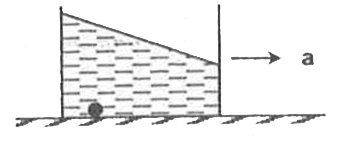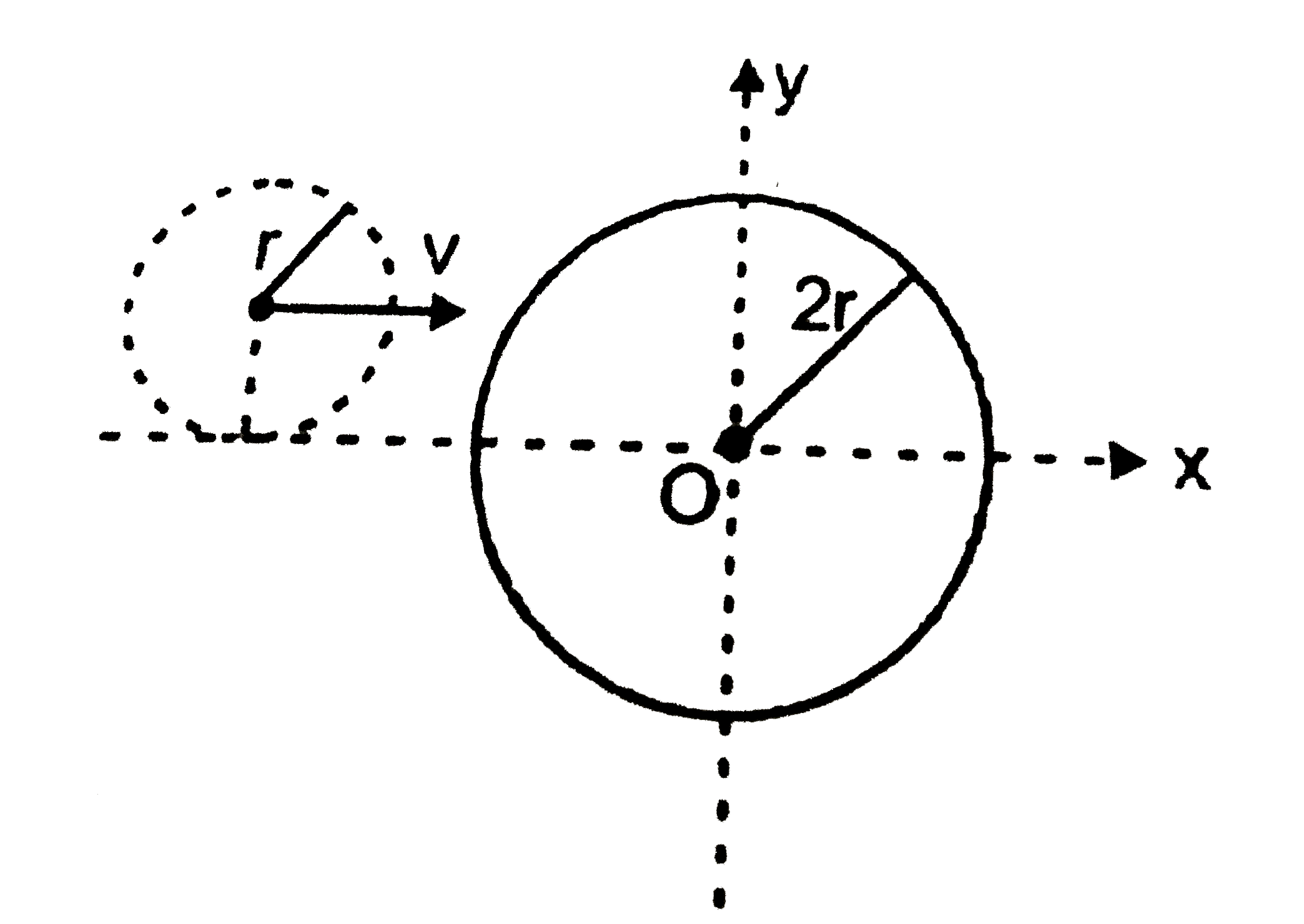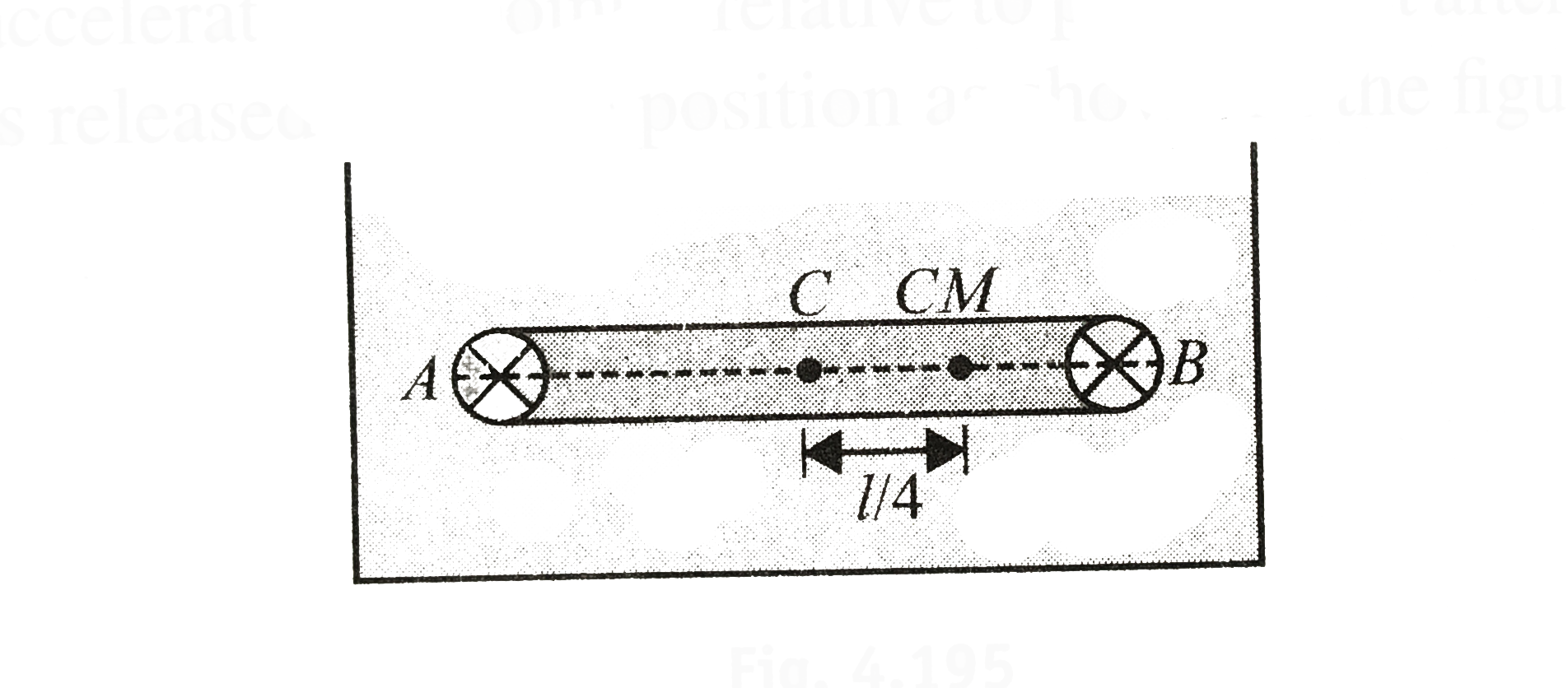A marble of mass x and diameter 2r is gently released in a tall cylinder containing honey. If the marble displaces mass y(<x)of the liquid, then the terminal velocity is proportional to
x+y
x−y
x+yr
x−yr
The correct Answer is:D
vT=2r2(ρ−ρ')g9η, x=43πr3×ρ, y=43πr3×ρ', vT∞(x−yr)
Topper's Solved these Questions
- LIQUIDSBOOK - VMC MODULES ENGLISHCHAPTER - LIQUIDSEXERCISE - JEE MAIN (LEVEL - 1 )
31 Videos
- LIQUIDSBOOK - VMC MODULES ENGLISHCHAPTER - LIQUIDSEXERCISE - JEE ADVANCED (LEVEL -2)
55 Videos
- LIQUIDSBOOK - VMC MODULES ENGLISHCHAPTER - LIQUIDSEXERCISE - LEVEL -1
90 Videos
- LAWS OF MOTION BOOK - VMC MODULES ENGLISHCHAPTER - LAWS OF MOTION EXERCISE - IMPECCABLE
53 Videos
- MAGNETIC EFFECTS OF CURRENT BOOK - VMC MODULES ENGLISHCHAPTER - MAGNETIC EFFECTS OF CURRENT EXERCISE - JEE Advanced (Archive)
78 Videos
Similar Questions
Two charges, each equal to q, aer kept at x=−a and x=a on the x-axis. A particle of mass m and charge q0=q2 is placed at the origin. If charge q0 is given a small displacement (ylt lt a) along the y-axis, the net force acting on the particle is proportional to
View SolutionA liquid drop of mass m andradius r is falling from great height. Its velocity is proportional to
View Solution
Knowledge Check
A spherical metal ball of mass m and radius (r) is falling through a viscous medium. The value of its terminal velocity is proportional to
A1/r onlyBm/rC(m/r)1/2Dm onlyTwo spheres of equal masses but radii R and 2 R are allowed to fall in a liquid, the ratio of their terminal velocities is
A1:4B1:2C1:32D2:1
A small steel ball of radius r is allowed to fall under gravity through a column of a viscous liquid of coefficient of viscosity η. After some time the velocity of the ball attains a constant value known as terminal velocity υT. The terminal velocity depends on (i) the mass of the ball m (ii) η, (iii) r and (iv) acceleration due to gravity g . Which of the following relations is dimensionally correct?
View SolutionA fluid of density ρ and viscosity η is kept in a container .The container is accelerating in horizontal direction with acceleration a . A Small solid sphere of radius r and density ρ/2 is held at the base of the container and released The distance travelled by the sphere in attaining half the terminal velocity is s=ρr2vτkη[In(2)−12] . Find the value of k .

View SolutionA tiny sphere of mass m and density x is dropped in a jar of glycerine of density y. When the sphere aquires terminal velocity, the magnitude of the viscous force acting on it is :
View SolutionTwo copper balls of radius r and 2r are released at rest in a long tube filled with liquid of uniform viscosity. After some time when both the spheres acquire critical velocity (terminal velocity) then ratio of viscous force on the balls is :
View SolutionA small smooth disc of mass m and radius moving with an initial velocity 'v' along the positive x− axis collided with a big disc of mass 2m and radius 2r which was initially at rest with its centre at origin as shown in figure.

If the coefficient of restitution is 0 then velocity of larger disc after collision is
View SolutionA non-uniform cylinder of mass m, length l and radius r is having its centre of mass at a distance l.4 from the centre and lying on the axis of the cylinder. The cylinder is kept in a liquid of uniform density ρ. The moment of inertia of the rod about the centre of mass is l. The angular acceleration of point A relative to point B just after the rod is released from the position as shown in the figure is

View Solution
